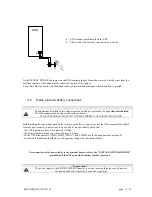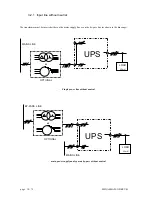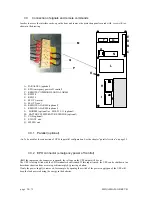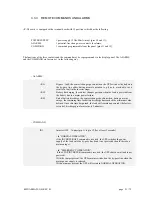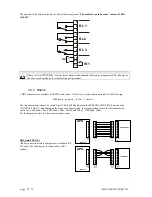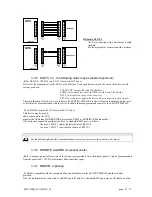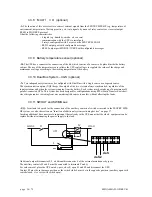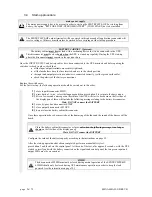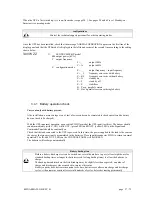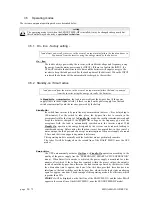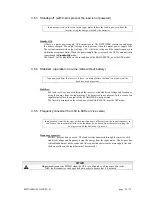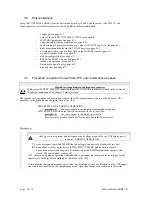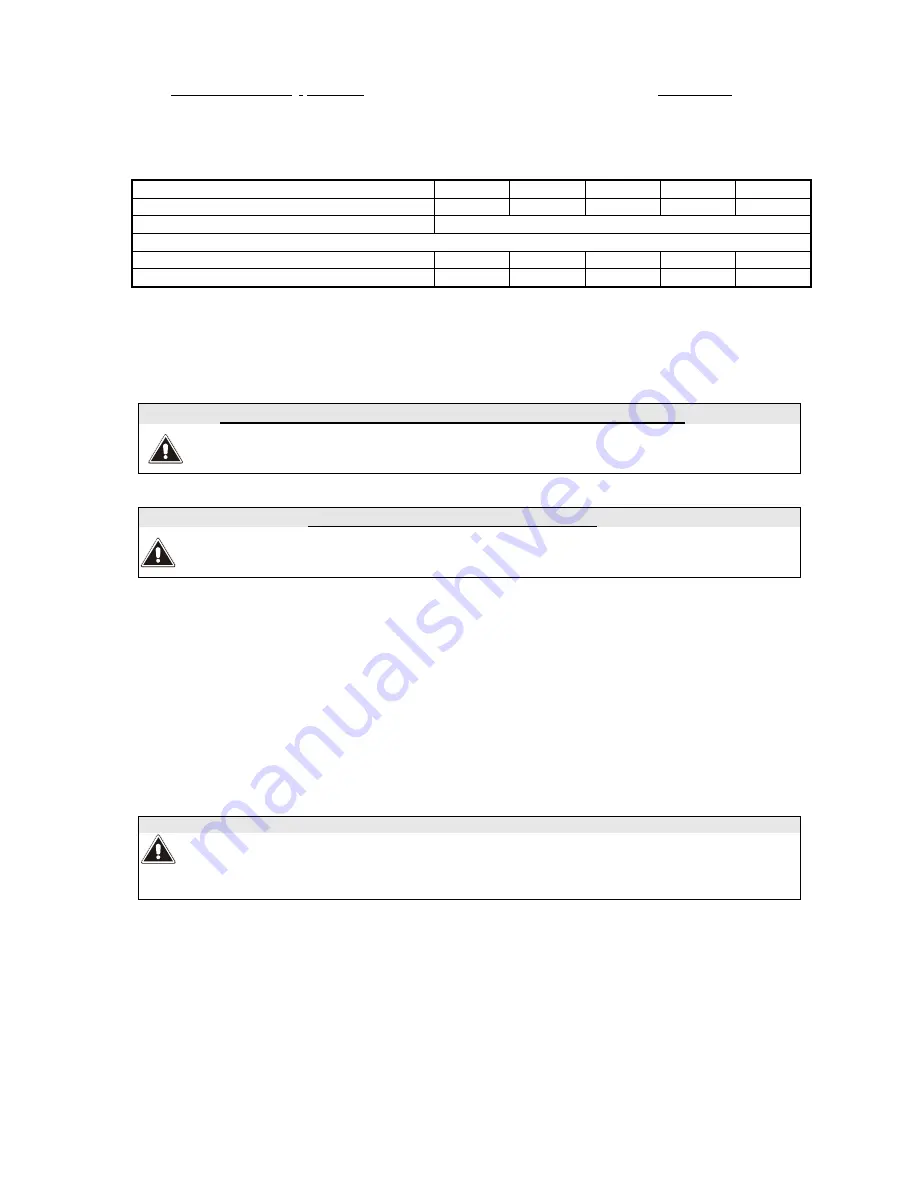
0MNA080A55-GB REV 01 page 15 / 75
With
battery power supply (
first fault) in the event of a shortcircuit on one of the outputs (second fault) it must be
possible for the fuse to be triggered before the inverter shuts down.
If the shortcircuit is of the three-phase type, the inverter can supply a current for 1 second that is 1.8 times the value
of the rated current of the UPS output (with a single phase shortcircuit the current is around 3 times the value).
In the worst-case scenario, that is a three-phase shortcircuit then a smaller current, the condition occurs if:
100kVA 120kVA 160kVA 200kVA 250kVA
rated output current: [A]
145
173
231
289
361
shortcircuit current (three-phase)
1.5 times the rated output current for 1 second
maximum fuse at the UPS output for selectivity:
fuse size for type gG fuse [A]
40
40
63
63
80
fuse size for type aM fuse [A]
20
25
32
50
50
At least five feeders are necessary in order to use the UPS at rated load with fuses of type gG.
To sum up, when there is a shortcircuit on the output, there are two alternatives if only the line affected by the
shortcircuit is to be isolated; let us consider the example of the 200kVA:
selectivity with both mains power supply and battery power supply;
the load has to be shared between at least five feeders, each sized at 20% of the rated power.
selectivity, with mains power supply only:
since it is considered unlikely that after a first fault a second fault will occur in the limited time of
operation from the battery
, it is sufficient to share the output between two lines, each sized for 50% of the
rated power.
3.1.3 Differential
If the SENTRY MPS-HP protection against electric shock uses differential current devices, these have to have the
following characteristics:
-
minimum differential current 300mA
-
sensitive direct current and unidirectional components (class A or class B)
-
protected against spurious tripping;
-
delay greater than or equal to 0.1 s.
neutral
In the standard version without isolating transformer on the by-pass line, the neutral from the mains power
supply is connected to the output neutral of the UPS.
THE ELECTRICAL SYSTEMS UPSTREAM AND DOWNSTREAM OF THE UPS ARE EXACTLY
THE SAME
In operation with mains voltage, a differential switch inserted on the input is triggered because the output circuit is
not isolated from the input circuit. In operation without mains voltage (battery power supply), the input differential
only cuts in if it is able to trigger because of the fault current without voltage at its ends (for example, not the
differential with auxiliary relay).
Other differential switches can always be inserted on the output, and should preferably be coordinated with the
switches on the input.

















